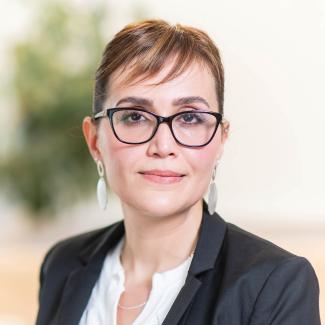A team of researchers working in collaboration from Orthopaedics, Family Practice, and Nursing will adapt the Choose to Move program - a flexible, scalable community-based program that has been shown to improve physical activity and mobility, and to reduce social isolation and loneliness in older adults.

March 10, 2023
As outlined in a recent media release from the Faculty of Medicine, a team of researchers from UBC and Simon Fraser University (SFU) have received $6.8M in funding from the Healthy Cities Implementation Science (HCIS) Team Grants. This includes $3M from the Canadian Institutes of Health Research (CIHR) for research that aims to promote healthy aging by tackling the epidemics of physical inactivity and loneliness that plague older adults living in medium- and large-sized cities.

Dr. Farinaz “Naz” Havaei is collaborating with Dr. Heather McKay, the project lead and a professor in the UBC departments of Orthopaedics and Family Practice, Dr. Joanie Sims-Gould, a clinical associate professor in the Department of Family Practice, and Dr. Dawn Mackey, associate professor at SFU’s department of Biomedical Physiology & Kinesiology. They are joined by researchers from UBC’s Active Aging Research Team.
The current “Choose to Move program” is evidence-based. It has been operating since 2015 and continues to be offered to community-living older adults. The new funding aims to address two gaps in the existing Choose to Move program. Naz explains further:
“First, we aim to reach a more diverse population of older adults through an adapted Choose to Move model. Specifically, across three projects we aim to reach:
1. South Asian older adults;
2. older men, and
3. older adults living in Northern BC.
“Second, we will focus on organizational readiness and enhance the evaluation of Choose to Move implementation strategies. Specifically, we are interested in learning what workplace factors/features are the most important predictors of organizations’ readiness to implement the Choose to Move program. This work will involve some psychometric evaluation.”
Naz’s partnership with Drs. Sims-Gould and Mackay began as a result of their previous research collaborations, including a CIHR-funded project focused on examining the implementation and evaluation of a pandemic policy. The study, entitled the Single Site Employment Order was introduced to long-term care homes. Through that research, Naz was introduced to Implementation Science theories and methodologies. “I found these super fascinating,” she says, “and the new CIHR partnership provides an opportunity to build up on that work and to receive further mentorship from these Implementation Science experts.”
Naz’s contribution to this work will be mostly in the areas of workforce optimization (activity coaches involved in Choose to Move), organizational behaviour, psychometrics (examining the psychometric properties of the readiness tool), cultural adaptation of the program, and evaluation methods while receiving valuable mentorship on Implementation Science methodology.